Ontario teachers worried about the return to school
Most things have changed this year to most of the people. The COVID-19 pandemic forced us to change our behaviour inside and outside doors and there are new public health and safety guidelines in place in almost every country. During the pandemic’s first wave, students had to adapt to a new model of education and remote learning was the only option at that time. The Ontario government announced in the last weeks a plan to return to schools in September. Premier Doug Ford said the plan was created after hearing some of the brightest minds in the country and admitted that outbreaks could happen.
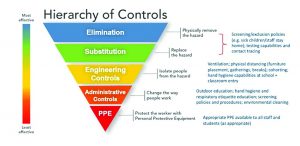
The Elementary Teacher’s Federation of Ontario (ETFO) and the Ontario Secondary School Teacher’s Federation (OSSTF) are worried since the government ignored the opinion of frontline educators and announced a plan to open the schools in September that doesn’t follow the advice of SickKids to reduce the size of classrooms. This week, both Federations spoke with Milénio Stadium, and they admitted that teachers are anxious and scared because the funding provided by the government is not sufficient to make a safe return. ETFO represents around 78,000 members in the education sector and OSSTF represents about 60,000 members and they hope the government will reconsider the plan before September arrives.
Milénio Stadium: In Ontario, most Grade 1 to 3 classes must have 20 or fewer students, while the average class size in Grades 4 to 8 is 24.5, which means some classes could hold more than 30 children, making physical distancing virtually impossible. Is this a mistake? What would be the ideal number of students inside a classroom in September?

San Hammond: It’s a mistake and ETFO and the parents are asking the Ontario government and the Ministry of Education to change that. I’m not sure what would be the ideal number, even the government at one time was saying that a class size should be no more than 15 students. So, a class of 30 would be separated in two classes. We had a number of different meetings with the government, but we found out about the new plan on social media and what we would prefer, and all stakeholders, would be to have access to the plan before they released it.
MS: Premier Doug Ford has repeatedly boasted about Ontario’s plan, stating that the province’s strategy includes “the lowest number of kids in the classroom in the country” and he underlined this week that other provinces, like BC, are impressed with Ontario’s plan. Does ETFO share this opinion?
SH: The Ontario plan has a few good points in terms of, for example, students in Grade 4 to Grade 12 wearing mask but the plan itself is severely underfunded. I was on a call Tuesday (Aug 11) morning with teachers across the country and they are all calling for the same thing. The class sizes being reduced, all students wear mask, ventilation system being updated. The Ontario government needs to stop and rethink his severely flawed plan to get this right for September. They should take a step back to the plan that they have now and seriously take into consideration what parents and stakeholders are saying about class sizes and transportation and work together to solve those issues. And if we need to delay the start of school that’s an option that they should consider getting this right.
MS: Ontario will require students from Grades 4 to 12 to wear face masks. Will teacher’s need help to put this in place inside the classrooms?
SH: Absolutely, and our locals are working closely with school boards to ensure that protocol and how will that be implemented in classrooms. Our biggest concern is how kindergarten and Grade 3 students won’t have to wear a mask. I think it would be a day and a half of training prior to students being at school for our members, we think it should be a couple of more days but at this point is we are walking through that kind of protocols with our members.
MS: The four main education unions, representing around 200,000 education workers, said in a joint statement that the plan and the budget to achieve it was risking public safety by “severely underfunding a safe return to school in September.” Schools will need more than $309 millions to create a safe return to school?
SH: The amount of funding acknowledge by the government is $300 million, that’s a great start, but the actual number will depend if you decrease those class sizes, what that looks like across the province and school boards would have to let the government know as quickly as possible how much of those funds would be and for additional caretakers, additional educators assistants, etc. For staffing is $30 million and that is not enough because we need to reduce class sizes and we need additional staff members. It will always depend on the needs that all school boards require across the province. Teachers are scared and they are concerned with their own safety. I had never got the amount of the e-mails that I am getting from parents and our members, on top of all concerns is the number of students in a class.
MS: In the last months, students in different countries were forced to try a new model of education. What’s the analysis that you do since remote learning is in place in Ontario? It was hard for teachers and students to adapt to the new model? In the future will we have only this model?
SH: In terms of the emergency remote learning that our members participated in from March, it was running a lot smoother at the end of June. But there is still a lot of flaws on it and a lot of unanswered questions. But all the stakeholders and experts agree that this model by himself won’t work, and they highlighted that it’s important to students to have classes face-to-face. In the future, I believe we will see an increase of online learning, but I don’t think it would be the only education model in the entire province.
MS: What would be your message to the parents and teachers?
SH: To both, parents and teachers, we are asking them to join other parents in demanding smaller class sizes, through an online petition, from kindergarten to Grade 8. They can help us pressuring this government to make sure that reopening is safe to everyone. I hope the government is flexible because I never saw this number of parents and education stakeholders all in the same page about class size particularly. The government has to listen to people’s concerns.
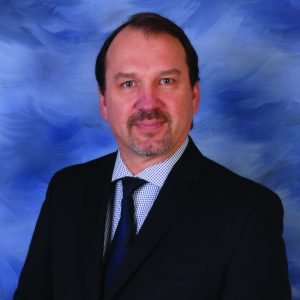
Milénio Stadium: What does OSSTF think about the Ontario’s back-to-school plan?
Harvey Bischof: The government did not consult with us in a meaningful way on the back-to-school strategy. We found out about the details of that strategy when it was being announced from a podium. There is not one aspect of that strategy where they give us options and asked us to select which would be a better option, so it doesn’t beard our fingerprints at all. There wasn’t consultation, what is chocking to me. It’s too little too late. They have ignored the most important recommendation from the very people they claimed to be listening to. SickKids report said that the priority strategy for making the return safe was to reduce the size of classes to allow for physical distancing and they simply ignored that recommendation. They are putting insufficient funding into staffing of people like custodians and cleaners, for example, and it all looks like a case of being pay wise and pound foolish, they’re saving money now which may cost them in the long run. There are reclosures of schools or parents feel little confidence in the plan that they won’t be sending their children to school and therefor can’t re-enter the economy themselves, all of those things will come back to haunt us if there is an outbreak. It is truly counterproductive to not pay heed to the voice of frontline educators who best understand how they implement these plans.
“For elementary and middle school students, a one metre (three foot) separation between desks in the classroom may be a reasonable balance to achieve beneficial effect from distancing and to practically accommodate children in the classroom (…) For high school students, a separation of two metres between students is preferred given the transmission risk may be higher in this age group”
Source: COVID-19: Recommendations for School Reopening – SickKids
MS: How many students we should we have in one class?
HB: It really depends of the classroom, but probably a good rule will be no more than 15 students.
MS: The parents that don’t feel comfortable with this plan won’t be forced to leave the kids at school. But, will teachers have the same option?
HB: That’s not clear to us, certainly it wasn’t clear from the government announcement. Those discussions are happening school board from school board right know, but I do not have an answer to that very good question. We do have a sick plan which provides the vast majority of health issues, but our preference is of course to keep members safe in the first place. We are exploring all legal options, we are consulting with legal consul to make sure that we are able to use any leavers that we need in order to protect our members.
MS: What would be the ideal funding to keep class sizes small and to recruit more people?
HB: There is a trivial amount of money to increase some staffing. They keep referring to some 30 million number as allowing for increase staff, but it won’t simply come close to meeting the needs. To increase staff, you are probably talking something in the neighbourhood of $1,5 billion, that would be required to reduce the size of elementary classes. Definitely it should be some money to provide assistance to secondary classes as well. We have some secondary schools fully reopening and they will have classes of 30 and more. The total number to provide for a safe re-entry would be something in the neighbourhood of $3 billion, but that will also include some money for equipment and other expenses.
MS: What will happen if somebody tests positive in one class? Can an ill student shut down an entire school?
HB: It seems to me that school boards have been individually left with the task of coming up with protocols to address that sort of situation which again straits me as inappropriate and anti-educational responsibility by this government.
MS: Teachers are scared to come back?
HB:Yes, and I represent not only teachers, but I also represent support workers in schools as well, education assistants. All of my members are scared, I’m hearing from lots of members about anxiety about returning. As we get closer to the return to school and we saw a government announcement that doesn’t came close to what it needs to do in terms of really keeping people safe, I’m hearing from members there is anxiety, there is fear.
MS: What if students go back-to school only in October instead of September?
HB: It would only help if they use that time to make changes to their plan. I would suggest that schools not reopen until appropriate measures have been taken, hiring the staffing that requires to keep classes at a reasonable size. Again, if there’s use in the delay to October to get that staffing in place I would say yes, absolutely it would help. It’s absolutely critical to reduce classes’ sizes, but also hiring sufficient cleaners to be able to follow the new rules. The numbers of custodians and cleaners that we have now are not enough to follow sanitization protocols. They should be looking for additional spaces that can be found so the classes could be split in smaller classes, in a community centre for example. Schools themselves they need to look at things like ventilation, so the building could be as safer as possible.
MS: What would be your advice for parents and teachers?
HB: My primary advice to parents would be to pressure the government, call your MPP, call your school board trustee, send him an email, send him a letter insisting that the government puts the resources that require in order to make the return to school safe. My advice for my members is we will keep working with them and we will do everything that we can to keep them safe.
MS: The older students will have to use a mask, but what will happen if they don’t follow the rules? It would be teacher´s responsibility?
HB: It would be the teacher’s responsibility in the class to have students follow the rules, but if, ultimately, that is unsuccessful then I would expect school administration to step in and support the teacher and ensure that the rules are being followed. I have had very little contact with the Ministry of Education, we had some meetings but it’s only one way of communication, it’s the ministry telling us with they are doing, as oppose to looking to us for our input.
MS: A Toronto District School Board (TDSB) trustee said this week that the province’s largest school board will prioritize shrinking elementary class sizes in neighbourhoods hit the hardest by COVID-19. What’s the OSSTF opinion about it?
HB: I agree with that, it probably would make sense to emphasize areas where the spread is greater and have even greater safety measures there. To make sure that everybody has sufficient resources to meet the safety needs for where they are.
Joana Leal/MS


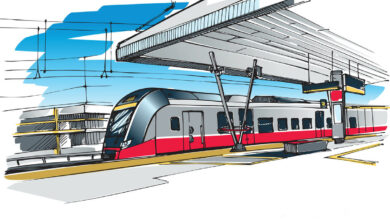

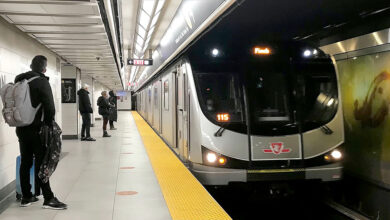

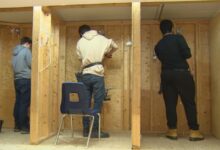
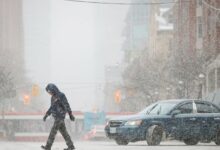
Redes Sociais - Comentários